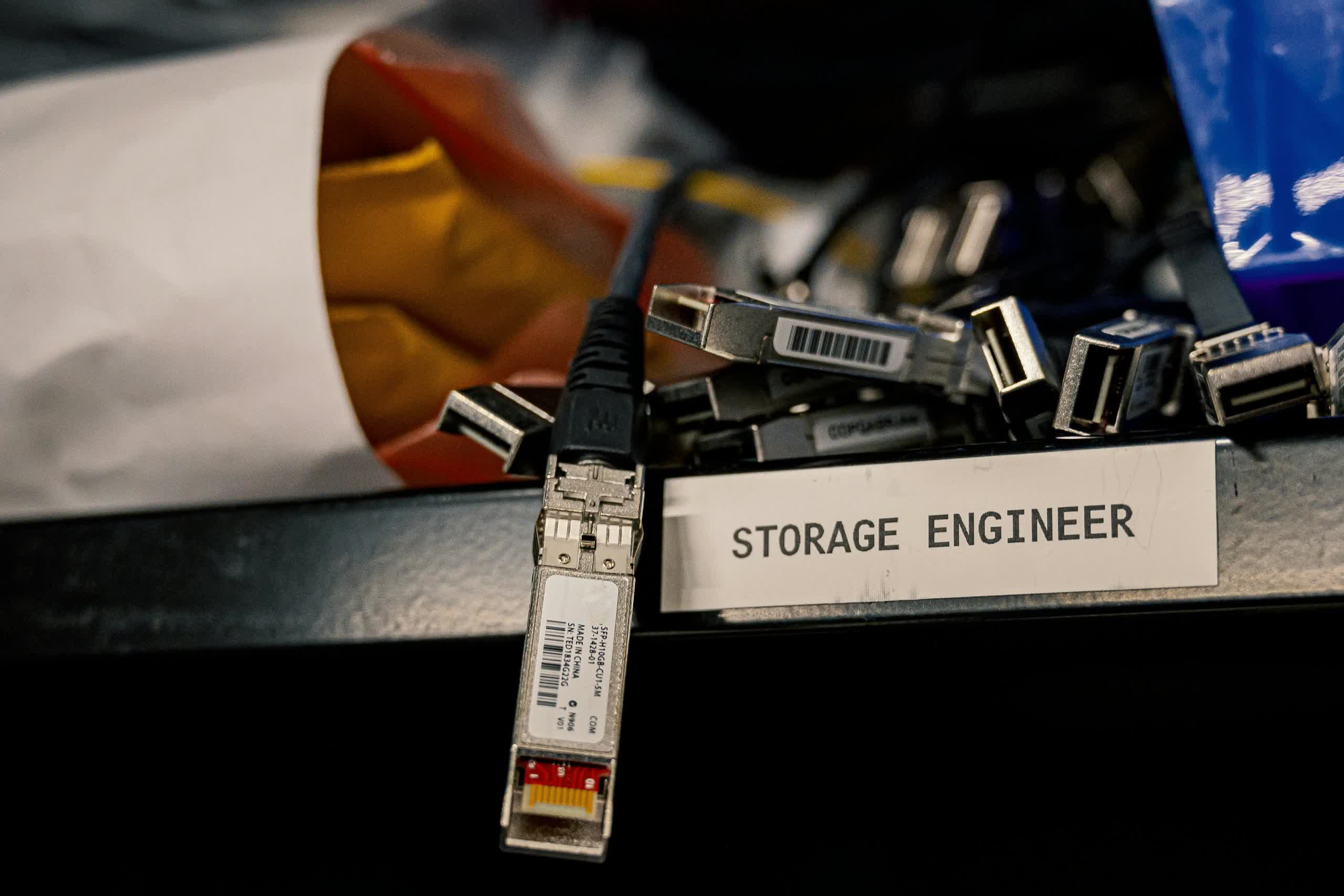The crash cart: In a hospital a crash cart could save your life, but Microsoft had a different type of crash cart back in the day that usually spelled the death of a testing PC. In-house developers called it the "Cart of Death" – a repurposed mail cart carrying daisy-chained USB hubs and tons of connected USB devices to test plug-and-play support on Windows PCs.

In a recent Dave's Garage chat, 30-year Windows veteran Raymond Chen reminisced about the early days of USB and the testing (and pranks) that revolved around the "Cart of Death."
The contraption was an old mail carrier you might find in any company's mail room – if those even exist anymore. Instead of hauling around mail, the Cart of Death carried three daisy-chained USB hubs connected to at least 60 other devices. Chen recalls at least three different mouse models, four keyboards, one USB printer, and various other peripherals (below).
"The USB Cart of Death was one of those office carts, like a mail cart, but it was loaded with like every USB device that they could get their hands on," said Chen.
Humorously enough, the cart was heavy and unwieldy, so they rigged it to be driven with a USB racing wheel.
These disparate devices were strung together through the daisy-chained hubs. As programmers perfected their code for each driver, someone would come around with the Cart of Death and ruin their day. All the devices on the cart "funneled" into one USB plug. So when the cart driver would plug it into a test machine, Windows would go crazy trying to recognize and install all these devices simultaneously.
The idea was that once the USB infrastructure settled down and all the drivers installed, Cart of Death personnel would try using each device to see if they worked without errors – that was if the cart driver was feeling nice.
"If you were feeling rude, what you would do is you would plug it in, watch the plug-and-play system enumerate the devices and start loading drivers for them, and then yank the plug right in the middle," Chen recounted.
As one would expect, interrupting the process this way usually resulted in a blue screen of death, hence the cart's name. Of course, Windows kernel programmers didn't like this because it meant they had to go back over their "perfect" code and add error handlers, among other tweaks.
Chen mentions a debugging lab with various test machines lined up on tables. Sometimes, the cart driver would go in at night and plug the Cart of Death into each PC, maybe for five seconds on one, seven on another, seven again on another, but with a different BSOD. Then, the programmers would arrive in the morning to a big mess of issues they had to remedy.
Dave Plummer is no stranger to Windows, either. He worked for Microsoft for 10 years, starting in 1993, helping develop MS-DOS. After Windows took hold, Plummer created various apps, including Windows Task Manager. Plummer is semi-retired now – if you can call running a YouTube channel between college lectures semi-retired – but his resume, combined with Chen's, made for a very entertaining interview between two Windows experts just talking shop.
https://www.techspot.com/news/100975-microsoft-had-cart-death-intentionally-crash-debug-early.html